
Roger Pellett
-
Posts
4,519 -
Joined
-
Last visited
Content Type
Profiles
Forums
Gallery
Events
Posts posted by Roger Pellett
-
-
-
Simple lighting idea:
To supplement my overhead fluorescent lighting, I like an inexpensive architect? Light, except that I removed the clamp on part. The fixture now sits in a 1/2in drilled hole on my workbench. Actually I have two holes to allow it to be moved depending upon where I am working. You could drill any number to allow it to be moved about.
- Jaager, thibaultron, druxey and 2 others
-
 5
5
-
We’d return tomorrow if it were not for this @#$& virus! While we saw a lot, including the Tattoo, I’m sure we just scratched the surface. I’d particularly like to visit the Denny’s ship model towing tank at Dunbarton, now sadly only a museum.
Everywhere that we went the people were wonderful!
Roger
-
For whatever reason the ship is being careened, that’s a great picture, and the artist has carefully recorded the details: the slack shrouds on the side being hove down, the chains across the deck, and the deck details not usually seen. This would make an interesting model.
Roger
- thibaultron, Mark P, bruce d and 2 others
-
 5
5
-
Re: Uffa Fox (droppable lifeboat painting)
This past August my wife and I ended a spectacular tour of Scotland with a visit to the Royal Yacht Britannia now permanently moored in Leith near Edinburgh.
A visit to the yacht provided an unexpectedly personal visit into the lives of Queen Elizabeth and Prince Phillip. In Prince Phillip’s stateroom, on his bedside table was one of Uffa Fox’s books on yacht design. Up topside on chocks was a Flying Fifteen sailboat designed by Uffa Fox. The placard by the boat explained that this was Prince Phillip’s personal sailboat, that he and Uffa often sailed together, and had become personal friends.
Roger
-
Hank, it’s coming together nicely.
Roger
- mtaylor and thibaultron
-
 2
2
-
Solving this problem can be done by taking the following logical steps.
1. Ship and boat rigs fall into a number of defined classes. In your case, one mast, gaff rigged mainsail, jib, and foresail. This is what we would call a “cutter.”
2. Regardless of the boat’s nationality, the physics of controlling the sails to make it perform are the same. There are two excellent books that describe how the sails of a cutter work. Tom Cunliff’s Hand, Reef, and Steer, and John Leather’s Gaff Rig. If the two, I personally prefer Cunliff’s book. Cunliff is a working sailor who has made long distance passages in a number of cutter rigged boats. After reading either of these you will understand not just what to do but why you are doing it.
3. It is true that different nationalities and regions did things differently. I have a book- Les bateaux des cotes de la Bretagne Nord by Jean Le Bot. This book is packed with information about the indigenous sailing craft of Breton. Although it is written in French, it is wonderfully illustrated, including an envelope of large scale plans.
By ignoring the kit supplied drawings and relying on well documented sources you will upgrade your model considerably.
Roger
-
-
Gender specific behavior- Women call it Gardening. Men call it Yard Work.
- Keith Black, druxey, mtaylor and 1 other
-
 4
4
-
Chapter 2- THE SHIP
Sometime during the year 1908, Benjamin Noble decided to invest in the Great Lakes shipping industry by building a ship.
Mr. Noble was President and part owner of Detroit, Michigan’s Capitol Brass Works, a large producer of brass plumbing fittings and steam plant specialties such as steam gages and traps.
By 1908, it was not easy for a small operator to break into Great Lakes shipping. In 1906, the influential magazine, Marine Review that covered Lake shipping news reported, “One of the characteristic features of the past two or three years has been the distribution of the great steel making companies to control the avenues of transportation from their mines to their furnaces.” This meant that the major steel companies each had an in-house fleet carrying iron ore, the Lakes’ principal bulk cargo. Independently owned vessels could only count on hauling the cargos that occasionally exceeded the capacities of the company owned fleets.
To overcome this problem Mr. Noble’s vessel would be specially designed to transport a niche product. The original major Great Lakes bulk cargo was lumber, milled from the supposedly inexhaustible white pine forests bordering the Lakes. By 1908, this cargo was in decline as supply of lumber from these forests had proven to be finite. Another wood products cargo, pulp wood was, however, booming fueled by the growth of the demand for newsprint. A ship intended to haul this cargo would require some special design features:
Dimensions- unlike vessels in the other bulk cargo trades that traveled between the Lake Superior and Lake Erie or Lake Michigan, those in the pulpwood trades needed to travel through the Welland Canal Around Niagara Falls and often through the St. Lawrence River Canals to deliver their cargos to Canadian Paper mills. Unlike the much larger SOO locks that could easily handle the large 600ft “Ore Boats” ( shown in the photo below), the length of these vessels going through these lower lake and river locks was limited to about 260ft. The Ship’s designers fixed her dimensions at 250ft length overall x 42ft beam.
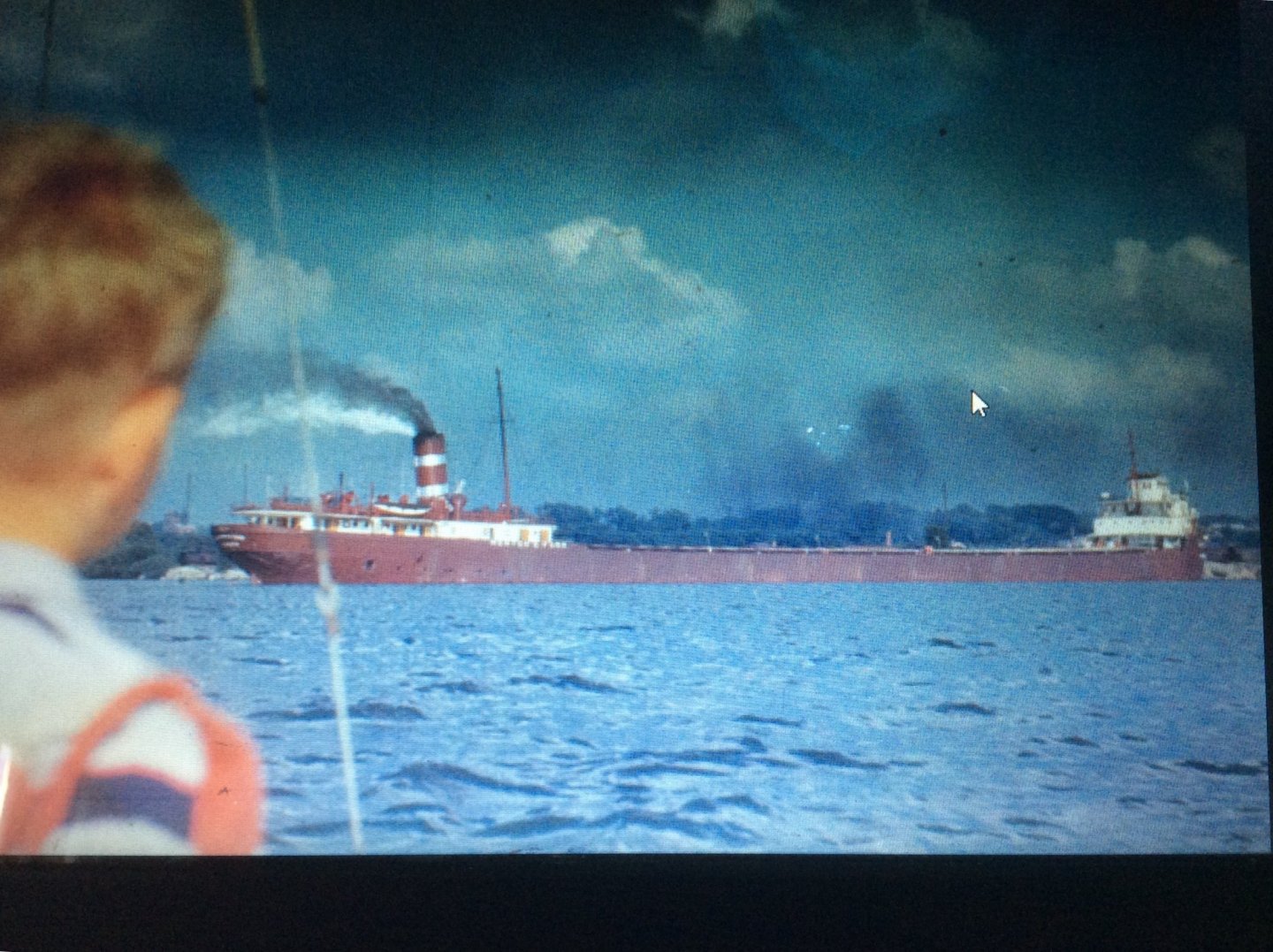 Standard 600ft Great Lakes Freighter or “Ore Boat”- Photo dates from 1950
Standard 600ft Great Lakes Freighter or “Ore Boat”- Photo dates from 1950
Cargo Handling- Great Lakes vessels hauling cargos of ore, coal, and grain could take advantage of highly developed shore-side loading and unloading equipment but those in the lumber and pulpwood often loaded at undeveloped locations so were fitted with onboard loading booms located at the fore and aft ends of the cargo bay.
Loading- Pulp wood is a very light cargo; It takes up a lot of volume per unit of weight. As filling up the cargo hold did not sink the ship to it’s intended draft it was customary for vessels in this trade to carry a large deck load. To contain this load in heavy weather the stern cabin atop the boilers and engines was elevated on a raised poop deck, and the sides of the weather deck were enclosed by permanent bulwarks. The poop deck, the usual Great Lakes vessel forecastle and the bulwarks along each side formed an open topped box intended to enclose a deck cargo. The bulwarks were each pierced with three large freeing ports to drain water coming onboard.
Draft- Unlike The standard 600 ft bulk carriers, vessels in the pulp wood trades often needed to venture up shallow rivers to load, and of course contend with the limitations of the canals, so the designers of Mr. Noble’s ship fixed her design draft at 14 ft. As there were no laws governing freeboard on the Lakes until 1936 she was often loaded much deeper, eventually leading to her loss.
Depth- Vertical Dimension from top of keel to underside of deck beam. 18ft. This means that floating at her design draft she would exhibit a freeboard of about 4ft, considered adequate for a vessel hauling a “buoyant” cargo. Unfortunately her designers had no control over the cargos that she would be chartered to haul.
To be continued
-
Can’t hit the Like button on that one, OC. Why is that some projects continually fight us? Maybe turn it into an airplane half model? Seriously, I hope that you find a solution that allows you to consider this model finished.
Roger
- popeye the sailor, Canute and Egilman
-
 3
3
-
-
Thanks for your explanation, EG. I just finished reading MIG Alley about air combat in Korea. At that time the Air Force was still dominated by the strategic bombing guys who believed that the way to defeat North Korea was by high level bombing of industrial targets. As a result, they lost a lot of B-29’s and crews, accomplished relatively little, and failed to provide ground support of UN troops. Fortunately this was furnished by Navy and particularly Marine air. When it finally dawned on the Air Force Brass that more than high level bombing was required they repurposed some of the early jet fighters as fighter bombers.
Roger
-
Should be an interesting project! For some reason, I just got “reinterested” in Civil War history, and have been rereading a number of my books in the subject. While the Eastern Theatre gets much of the publicity, the Western Theatre and particularly the River Campaign were enormously Important.
Roger
-
-
If My understanding is correct, the F104 was developed as a fighter/ interceptor, and had limited range. From the information included above, Captain Tofferi was lost on a bombing mission. Why did the Air Force use these difficult to fly planes in this role when fighter bombers were available?
Roger
- popeye the sailor, Canute, lmagna and 3 others
-
 6
6
-
-
The boom crutch- A massive structure to support the massive main boom. I went back and looked at pictures of the boat Under Sail and this is a permant structure. Care needs to be taken not to snag it when the boom swings! I guess that’s why they sail with a professional crew.
Anyhow, more wonderful work!
Roger
- FriedClams, mtaylor, Keith Black and 2 others
-
 5
5
-
Edward,
I have several more including a Sikh bagpiper. I’ll be adding to this over the coming months. I like Indian army subjects with their various colorful uniforms. Makes me want to reread M.M. Kay’s novel The Far Pavilions.
Roger
- Canute, thibaultron, mtaylor and 4 others
-
 7
7
-
-
My great grandfather, James H. Speer served in the 7th Ohio Cavalry from the regiment’s initial muster in the fall of 1862 until January 1865 when he was discharged for disability. The regiment fought at the siege of Atlanta and at the December 1864 battles of Franklin and Nashville, TN. He died in 1896 and is buried at the Ohio Soldiers and Sailors Home at Sandusky, Ohio.
His brother served on the Federal Navy gunboat Baron DeKalb, a model of which is currently being built on the forum’s scratch building site.
Roger
- ccoyle, CDW, Edwardkenway and 5 others
-
 8
8
-
-
Usable power tools have come down in price over the years. My first stationary power tool was a no name drill press. 50 years later I still use it almost daily regardless of the project that I am working on. I believe that I paid $100 to $300 dollars for it new. Today in 2020 inflated dollars a bench top drill press bought from a bog box home improvement store will cost less than $100.
Of course, specialty tool dealers advertise drill presses selling for more than $1000 but the less than $100 model will probably be adequate for most model builders.
About the time that I bought the drill press, I received a Dremel type rotary tool as a present. I still have it but rarely use it. The drill press is the go to tool.
For drilling where I cannot use the drill press, I have a Mincraft hand held pistol grip drill hooked up to a variable frequency power supply. Unlike the Dremel type rotary tool it has a Jacobs Chuck. Unfortunately it is no longer made.
Roger
-
Nice work! It looks like a real brute!
Roger
- popeye the sailor, CDW, Canute and 2 others
-
 5
5

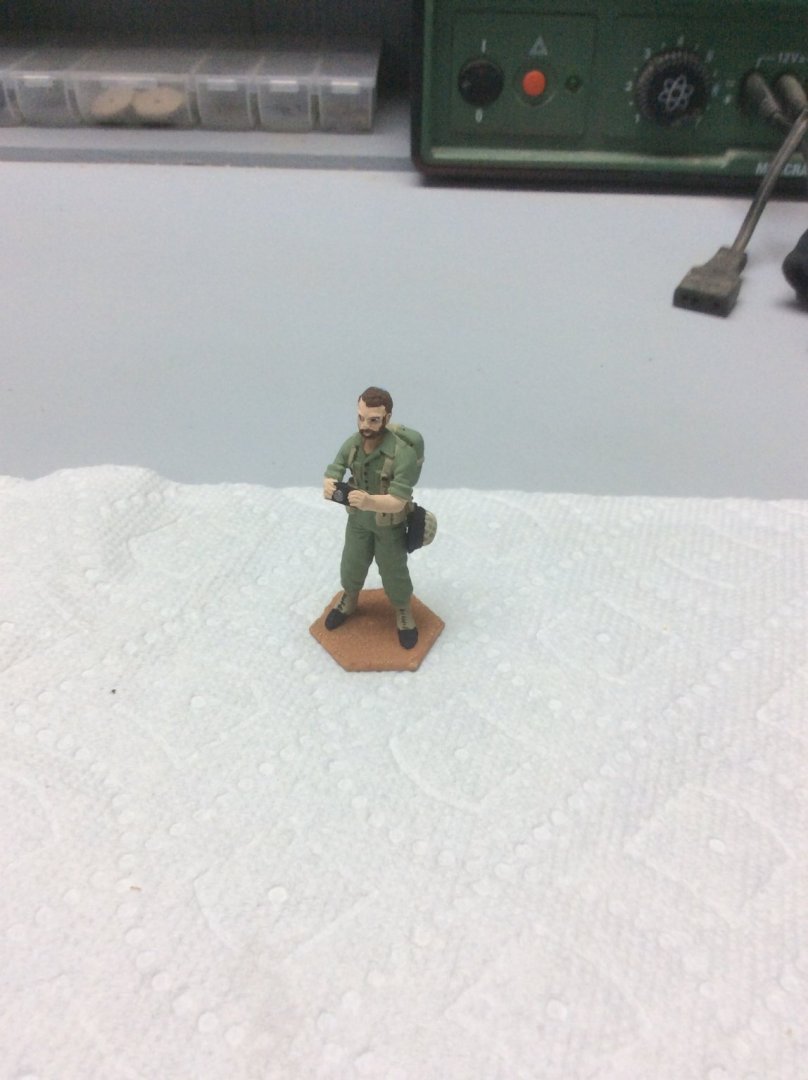
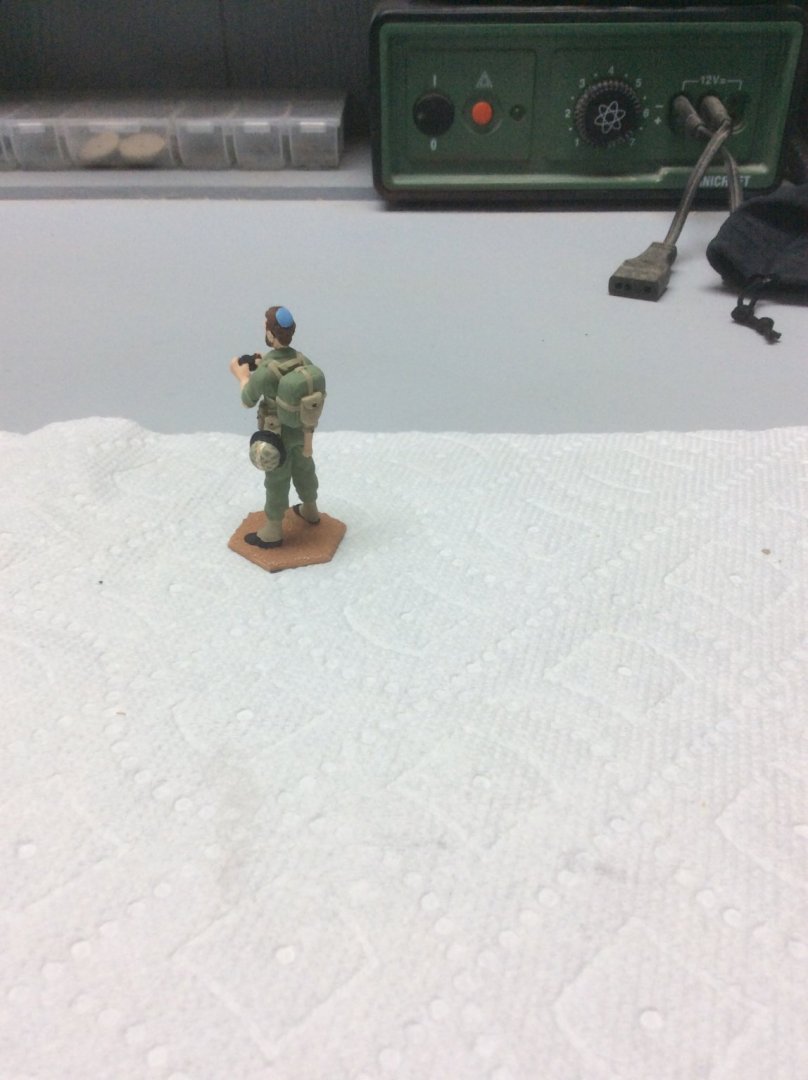
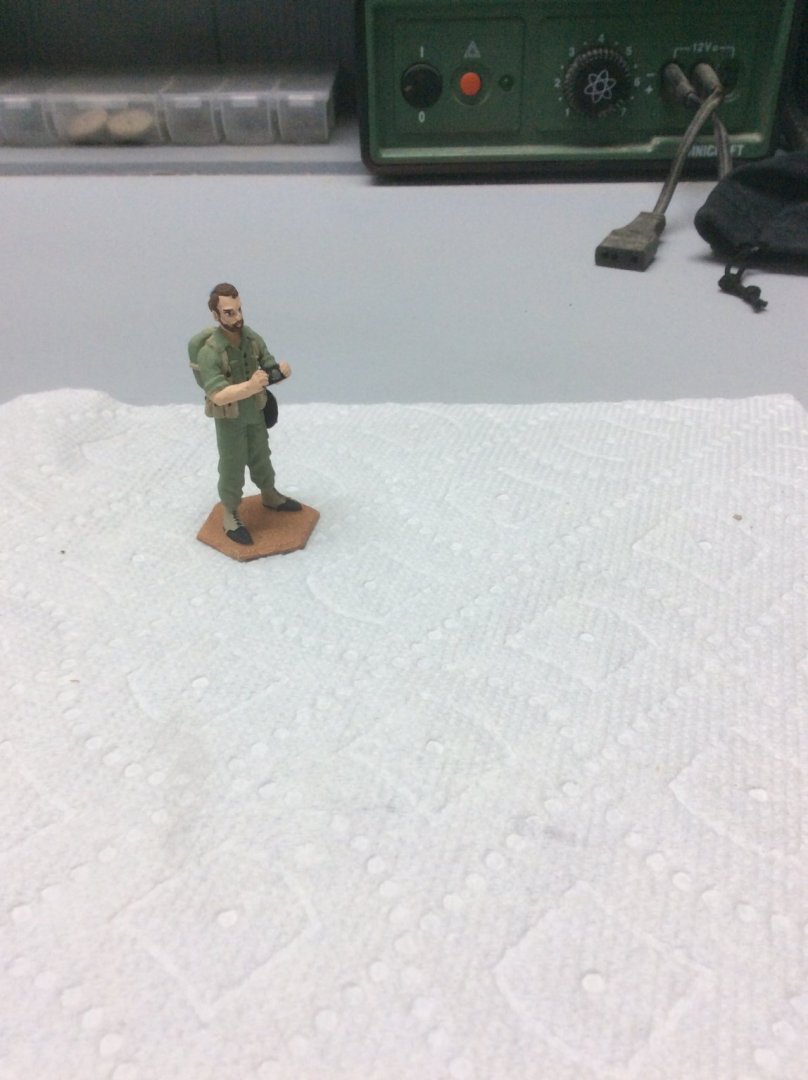
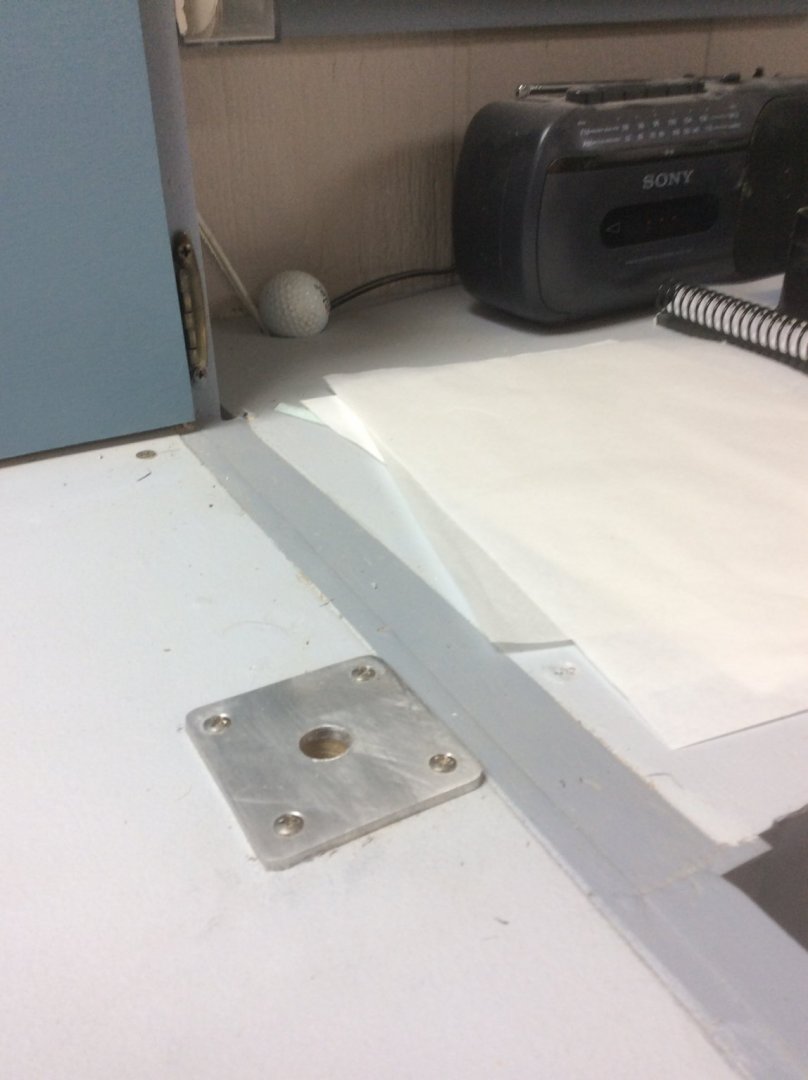
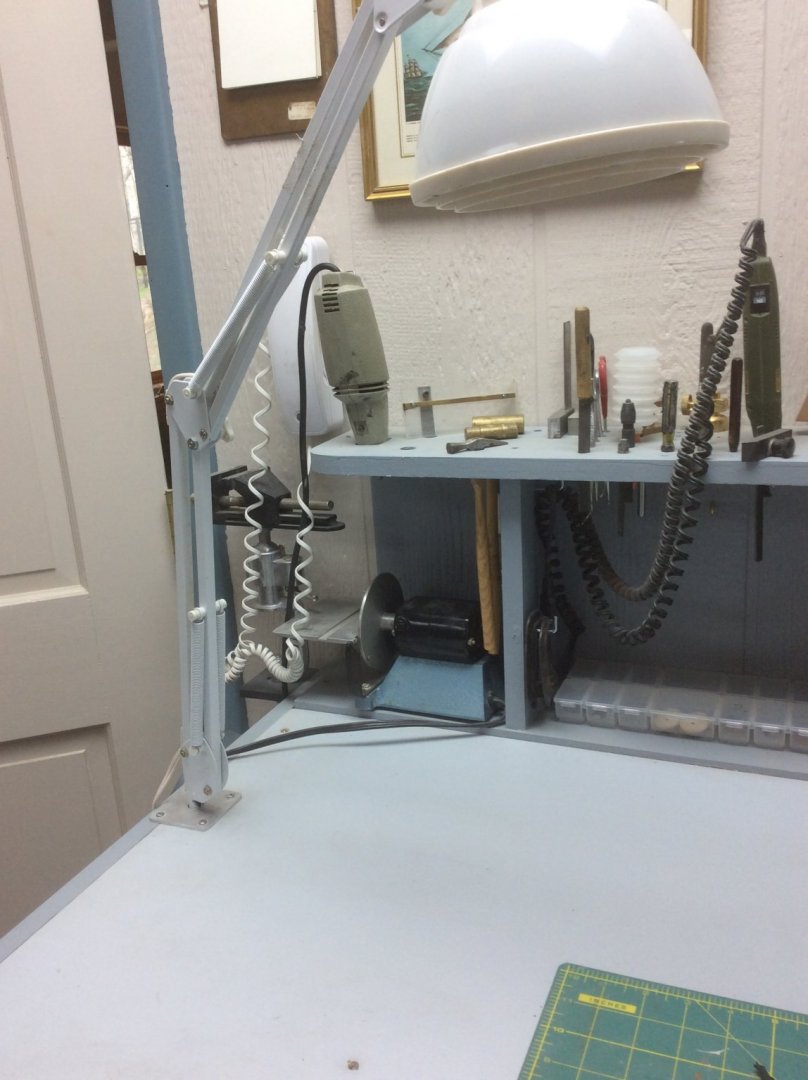
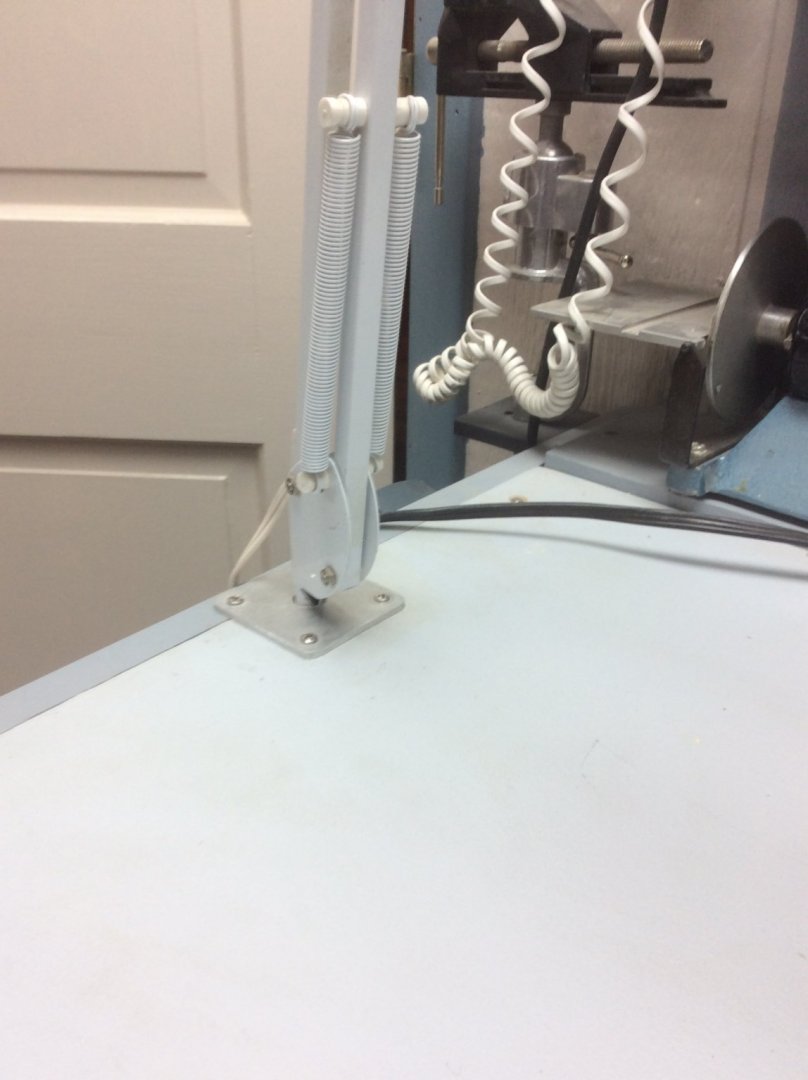
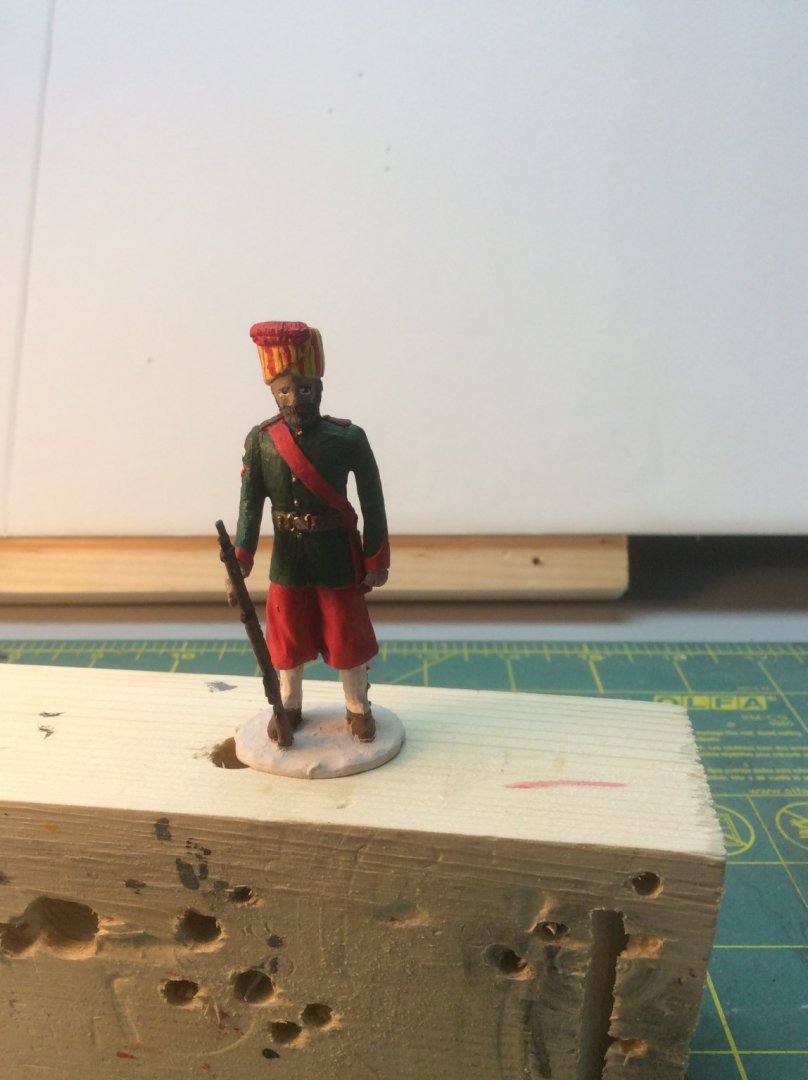
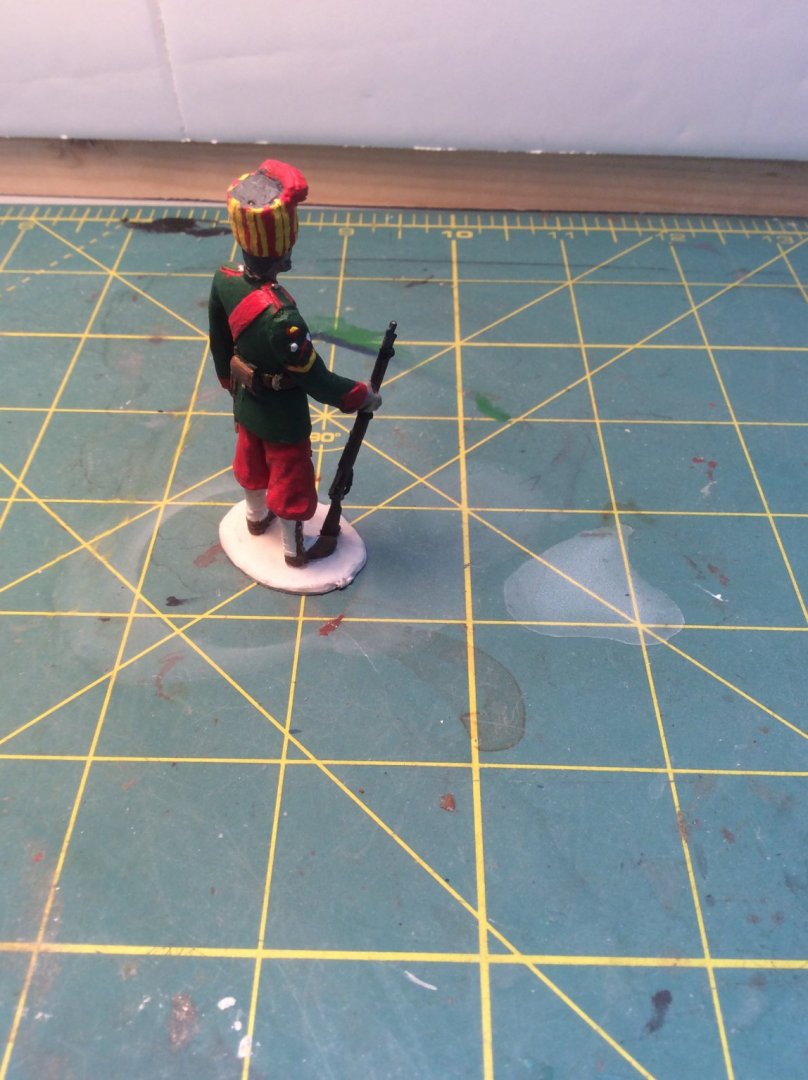
Galleon San Luis, please help
in Nautical/Naval History
Posted
As has been said many times on the forum, most galleon model kits are based mostly on conjecture and marketing hype. Recently there has been some real scholarship to understand the geometric rules in ancient manuscripts that still exist. Two books containing discussions of this are The Galleon, by Peter Kirsch and Vanguard of Empire by Roger C. Smith.
There has been one wrecked Sixteenth Century Spanish vessel discovered in sufficient state of preservation to allow reconstruction by archeologists. While not a warship, it Is considered to exhibit many characteristics of a Galleon. This is the Red Bay Galleon, believed to be the whaling support vessel San Juan crushed in the ice at Red Bay Labrador. The results of this discovery are published in a monumental five volume report by Parks Canada. While I purchased the hard copy several years ago, I have heard that this information is also available on line.
Roger